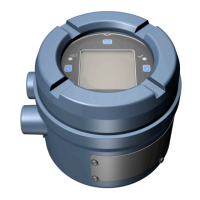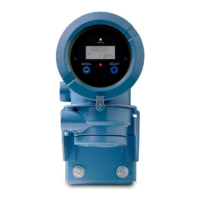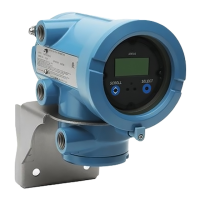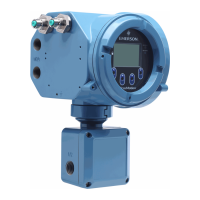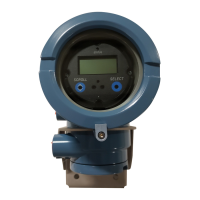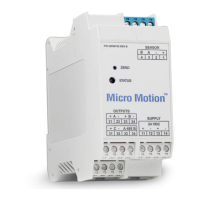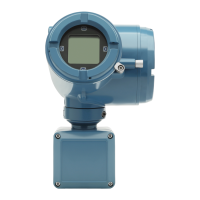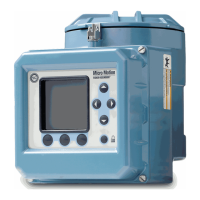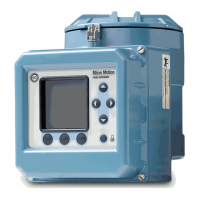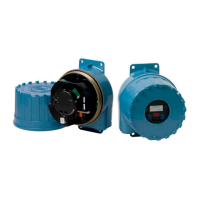Configuration and Use Manual 119
Measurement Performance
Measurement Performance TroubleshootingCustody TransferCompensation
10.5 Performing density calibration
Density calibration includes the following calibration points:
• All sensors:
- D1 calibration (low-density)
- D2 calibration (high-density)
• T-Series sensors only:
- D3 calibration (optional)
- D4 calibration (optional)
For T-Series sensors, the optional D3 and D4 calibrations could improve the accuracy of the density
measurement. If you choose to perform the D3 and D4 calibration:
• Do not perform the D1 or D2 calibration.
• Perform D3 calibration if you have one calibrated fluid.
• Perform both D3 and D4 calibrations if you have two calibrated fluids (other than air and
water).
The calibrations that you choose must be performed without interruption, in the order listed here.
Note: Before performing the calibration, record your current calibration parameters. If you are using
ProLink II, you can do this by saving the current configuration to a file on the PC. If the calibration
fails, restore the known values.
You can calibrate for density with ProLink II or the Communicator.
10.5.1 Preparing for density calibration
Before beginning density calibration, review the requirements in this section.
Sensor requirements
During density calibration, the sensor must be completely filled with the calibration fluid, and flow
through the sensor must be at the lowest rate allowed by your application. This is usually
accomplished by closing the shutoff valve downstream from the sensor, then filling the sensor with
the appropriate fluid.
Density calibration fluids
D1 and D2 density calibration require a D1 (low-density) fluid and a D2 (high-density) fluid. You
may use air and water. If you are calibrating a T-Series sensor, the D1 fluid must be air and the D2
fluid must be water.
For D3 density calibration, the D3 fluid must meet the following requirements:
• Minimum density of 0.6 g/cm
3
• Minimum difference of 0.1 g/cm
3
between the density of the D3 fluid and the density of water.
The density of the D3 fluid may be either greater or less than the density of water.
For T-Series sensors, the D1 calibration must be performed on air and the D2
calibration must be performed on water.

